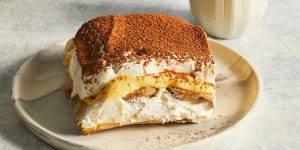
35 interesting facts about carbonara
- 👁️ 561
Carbonara is a classic Italian pasta dish that’s both simple in its ingredients and rich in flavor. Originating from Rome, this dish is a beloved staple that has captured the hearts of food lovers worldwide. Carbonara is traditionally made with eggs, hard cheese, cured pork, and black pepper, creating a creamy, savory sauce that clings to the pasta beautifully. It is a testament to the ingenuity of Italian cooking, where a few quality ingredients combine to create something truly magnificent. Below are 35 interesting facts about carbonara that explore its history, variations, and cultural significance.
- Carbonara is traditionally made with spaghetti, but fettuccine, rigatoni, or bucatini can also be used.
- The dish originated in Rome during or just after World War II.
- Carbonara likely came from the Italian word “carbonaro” which means charcoal burner, suggesting it was a dish eaten by charcoal workers.
- Some believe that the dish was developed as a hearty meal for Italian charcoal workers.
- The authentic Roman recipe does not include cream.
- Carbonara’s creamy sauce is made by combining eggs and cheese, not by adding cream.
- The original cheese used in carbonara is Pecorino Romano, a salty Italian cheese made from sheep’s milk.
- Pancetta is the traditional pork element used, but guanciale, which is cured pork cheek or jowl, is considered more authentic.
- The American version of carbonara often includes heavy cream, which is not traditional in Italy.
- The key to perfect carbonara sauce is to mix the eggs and cheese with hot pasta to create a smooth and creamy texture without scrambling the eggs.
- Italian carbonara uses freshly cracked black pepper which provides a sharp bite that contrasts with the creaminess of the sauce.
- Carbonara was relatively unknown outside of Italy until after World War II.
- The dish became popular among American soldiers stationed in Italy during the war.
- Carbonara is considered a quick, inexpensive meal, which contributed to its popularity in post-war Italy.
- There are no official records of carbonara before the mid-20th century.
- The first documented recipe of carbonara appeared in a Roman cookbook in the 1950s.
- Carbonara Day is celebrated on April 6th every year.
- The egg yolks give carbonara its rich and creamy consistency.
- Authentic carbonara never uses bacon as a substitute for pancetta or guanciale.
- The pasta water is crucial as its starches help the sauce emulsify and cling to the pasta.
- Spaghetti Alla Carbonara was one of the first Italian dishes to be widely noted for its use of bacon.
- In Italy, each region may have its own variation of carbonara.
- Some chefs add garlic to the dish, while purists stick to the original four ingredients.
- Vegetarian versions of carbonara may use zucchini strips or smoked cheese as a replacement for pork.
- In Japan, carbonara is often made with udon noodles.
- A common error when making carbonara is to cook it at too high a heat, which can lead to scrambled eggs.
- Carbonara is a staple on the menus of trattorias in Rome.
- The dish is a popular choice for an Italian Christmas Eve dinner.
- Carbonara has been adapted in various cuisines around the world, including a popular Korean version with added spiciness.
- The smooth texture of carbonara makes it particularly popular among children.
- Carbonara is often paired with a robust Italian red wine.
- The success of a carbonara sauce depends on the quality of the ingredients, particularly the freshness of the eggs and the type of cheese used.
- Some modern versions of carbonara include peas, mushrooms, or onions.
- The simplicity of carbonara has led it to be considered a comfort food.
- Despite its global popularity, carbonara remains deeply rooted in Roman culinary traditions.
Carbonara exemplifies the beauty of Italian cuisine, where minimal ingredients combine to create a dish full of depth and flavor. Its history as a dish for working-class Romans has transformed into a global phenomenon, beloved for its creamy texture and savory taste. Carbonara’s versatility and simple preparation make it a favorite for both quick family meals and more elaborate culinary occasions. This dish not only provides a delicious meal but also connects those who eat it with Italian culinary history.











